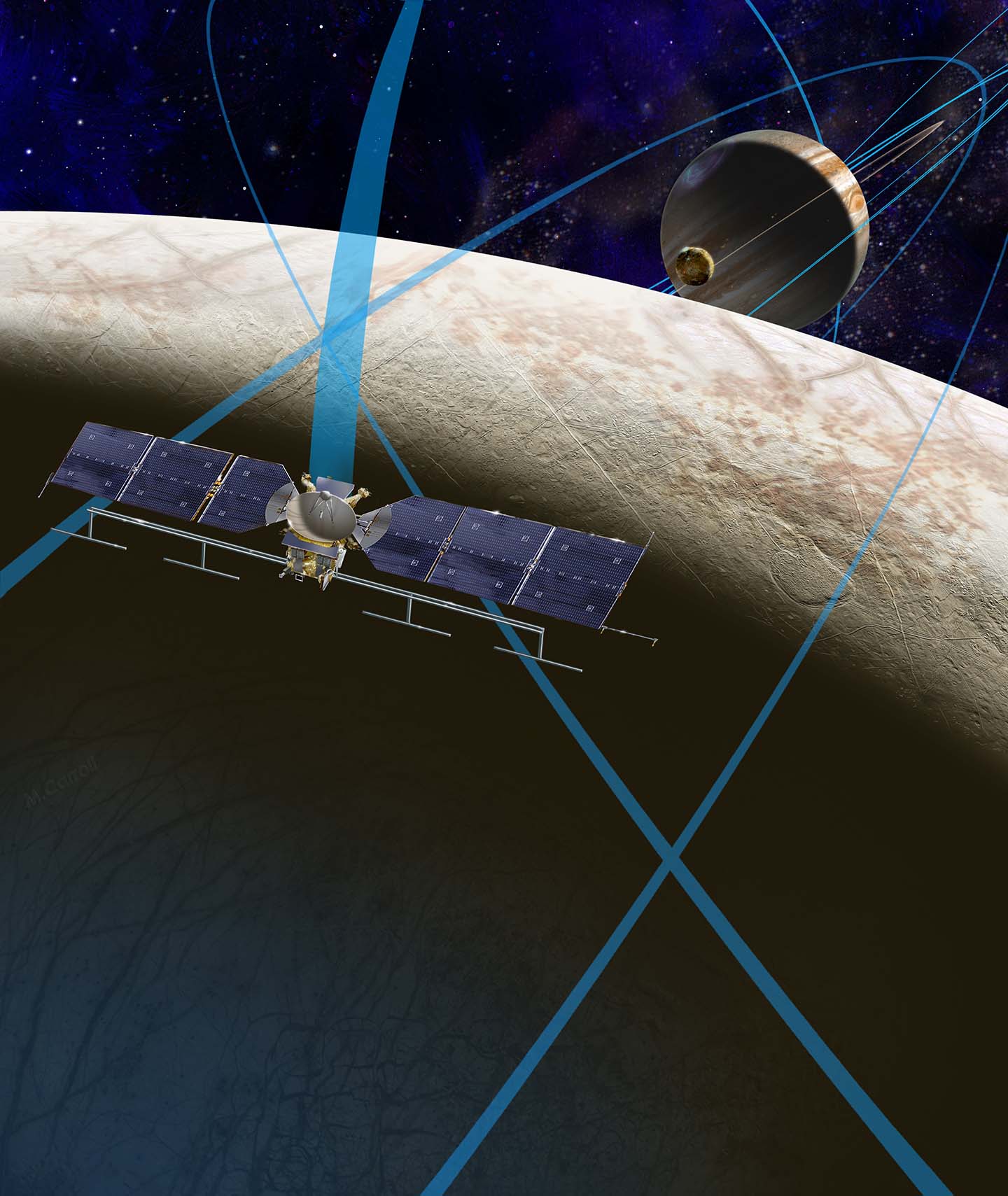Press Release
Two Johns Hopkins APL Instruments Selected for NASA Mission to Explore Europa
Wed, 05/27/2015 - 11:01
Two instruments designed by the Johns Hopkins University Applied Physics Laboratory (APL) in Laurel, Maryland, have been selected for flight aboard a proposed NASA mission to explore Jupiter’s moon Europa and investigate its habitability. The moon has an icy shell that is thought to overlie a saltwater ocean, which many scientists believe harbors conditions that could support life.
The Plasma Instrument for Magnetic Sounding (PIMS) will measure the plasma surrounding Europa in order to characterize the magnetic fields generated by plasma currents, thereby enabling precise determinations of the thickness of the ice shell that encases Europa as well as the depth and salinity of the ocean below.
“PIMS will help to unlock the secrets of Europa’s icy shell and hidden sea. By measuring the plasma currents around Europa, along with the magnetic field measurements provided by the Interior Characterization of Europa using Magnetometry (ICEMAG) instrument, we will learn a great deal about Europa’s ice shell and subsurface ocean,” said APL’s Joseph Westlake, principal investigator for PIMS.
APL will also provide the Europa Imaging System (EIS), a high-resolution, dual-camera instrument that will provide near-global coverage at 48-yard (50-meter) resolution, topographic and color maps, and imaging of targeted sites at roughly one-yard (about one-meter) resolution. “EIS will transform our understanding of this fascinating moon by revealing its surface in unprecedented detail and giving us new insights into its ice shell,” said Elizabeth Turtle of APL, principal investigator for EIS. “The EIS team has specifically designed this instrument to be able to take very high-resolution images of Europa’s surface during fast flybys in Jupiter’s high-radiation environment.”
“Europa has tantalized us with its enigmatic icy surface and evidence of a vast ocean, following the amazing data from 11 flybys of the Galileo spacecraft over a decade ago and recent Hubble observations suggesting plumes of water shooting out from the moon,” said John Grunsfeld, associate administrator for NASA’s Science Mission Directorate in Washington. “We’re excited about the potential of this new mission and these instruments to unravel the mysteries of Europa in our quest to find evidence of life beyond Earth.”
In addition to providing the PIMS and EIS instruments, APL will also provide science leadership for two other instruments among the nine selected for the mission. The Laboratory will develop the scanning mirror and the instrument electronics for the Mapping Imaging Spectrometer for Europa (MISE) instrument, led by Diana Blaney of NASA’s Jet Propulsion Laboratory (JPL), with APL’s Charles (Karl) Hibbitts as deputy principal investigator. Wes Patterson of APL will serve as associate deputy principal investigator on Radar for Europa Assessment and Sounding: Ocean to Near-surface (REASON), a radar instrument that will examine and take sounding measurements of the icy crust of Europa; that instrument’s principal investigator is Donald Blankenship of the University of Texas, Austin.
NASA’s fiscal year 2016 budget request includes $30 million to formulate a mission to Europa that would send a solar-powered spacecraft to make multiple close flybys of Jupiter’s smallest moon over a three-year period. In total, the mission would perform 45 flybys at altitudes ranging from 16 miles to 1,700 miles (25 kilometers to 2,700 kilometers).
